How to Learn to Read Wsdl File in Java
What is a WSDL?
WSDL, or Web Service Description Language, is an XML based definition language. It's used for describing the functionality of a Lather based spider web service.
WSDL files are key to testing Soap-based services. SoapUI uses WSDL files to generate examination requests, assertions and mock services. WSDL files define various aspects of SOAP messages:
- Whether any element or attribute is allowed to appear multiple times
- The required or optional elements and attributes
- A specific order of elements, if it is required
You may consider a WSDL file equally a contract between the provider and the consumer of the service. SoapUI supports one.1 version of the WSDL specification and corresponding bindings for SOAP versions 1.ane and 1.ii.
This article explains how to piece of work with WSDL files in SoapUI. If yous are looking for a WSDL example, or if yous want to learn nearly the differences between WSDL and WADL, please run across SOAP vs REST.
Work with WSDLs in SoapUI
Create Projection From WSDL
To take a closer look at a WSDL file, create a new project and import a sample WSDL file:
-
In SoapUI, click
 or select File > New SOAP Project
or select File > New SOAP Project -
In the dialog box, specify the following URL in the Initial WSDL field:
http://www.dneonline.com/calculator.asmx?wsdl
-
Exit the default settings and click OK
SoapUI will load the specified WSDL and parse its contents into the following object model:
A WSDL can comprise whatever number of services (the bindings). A binding exposes an interface for the specified protocol. In the case above, the WSDL file exposes two bindings: one for SOAP 1.ane ("CurrencyConverterSoap") and 1 for Lather 1.two ("CurrencyConverterSoap12").
Tip: SoapUI saves the WSDL file to a cache to avoid unnecessary network requests when you work with the projection. If y'all want SoapUI to e'er use a remote WSDL file, gear up the Cache Definition projection property to Simulated.
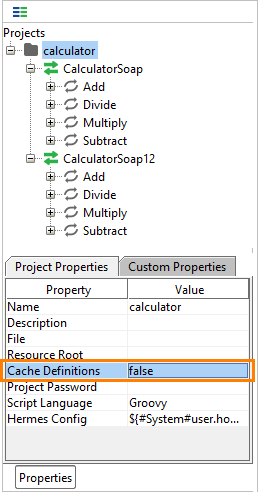
Explore WSDL
Double-click the service in the navigator to open up the editor:
-
The Overview tab contains general information on the WSDL file: its URL, target namespace, etc.
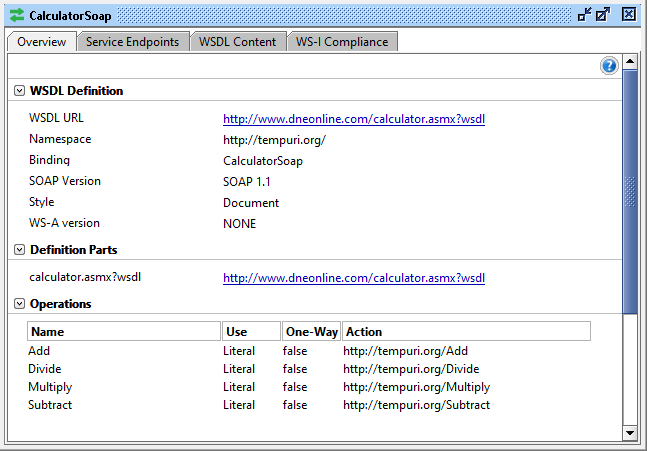
-
The Service Endpoint tab contains endpoints for the interface:

Besides endpoints specified in the WSDL file, you can add endpoints for the service. For each endpoint, you can specify the required authentication.
-
The WSDL Content tab provides more than details on the WSDL file
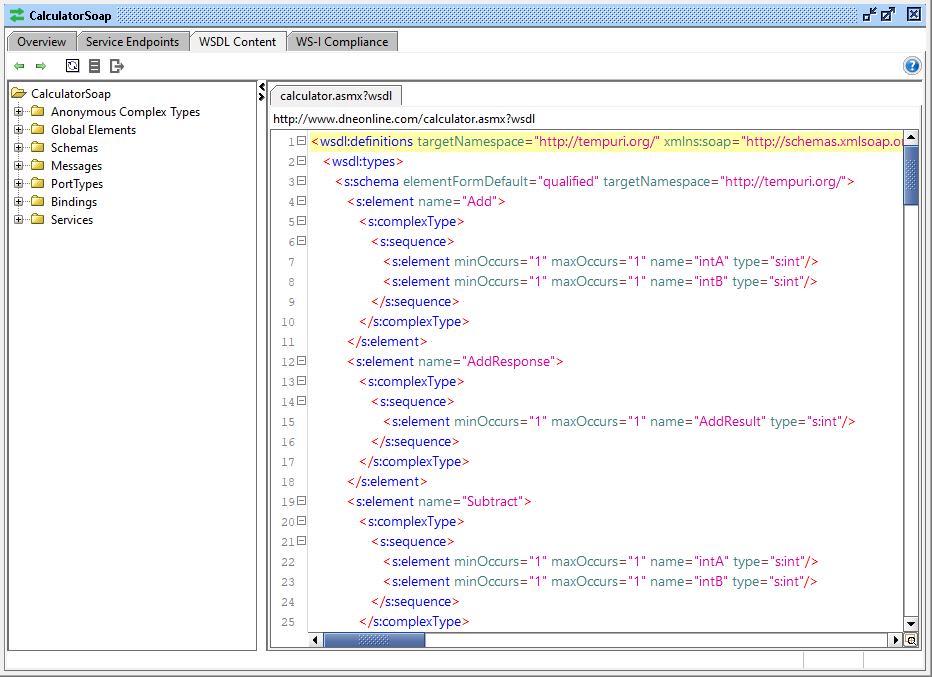
The left panel allows you to scan through the contents of the file. If the service contains several WSDL files, each file is shown in a separate tab.
The toolbar contains the following options:
-
On the WS-I Compliance tab, you can validate your web service confronting the WS-I Basic Profile (meet below).
Validate the WSDL confronting the WS-I Basic Profile
Since the initial cosmos of WSDL and SOAP, a multitude of standards accept been created and embodied in the Web Services domain, making it hard to concord on exactly how these standards should exist used in a Web Service Context. To make interoperability betwixt different Web Service vendors easier, the Web Service Interoperability Organization (WS-I; http://www.ws-i.org) has divers the WS-I Basic Profile - a set of rules mandating how the standards should be used. SoapUI is arranged with version i.1 of the profile. Use information technology to check the conformance of a WSDL file and Soap messages.
To validate the WSDL Service:
-
Double-click the service in the Navigator and switch to the WS-I Compliance tab
-
Click
 to run validation
to run validation
- or -
-
Correct-click the service in the Navigator
SoapUI volition show the validation written report:
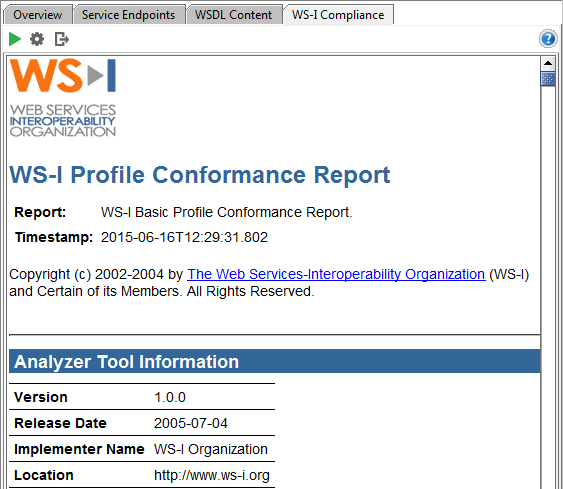
To validate Soap messages:
-
Open up a Lather request and send it
-
Right-click within the XML panel of the response editor and select Check WS-I Compliance
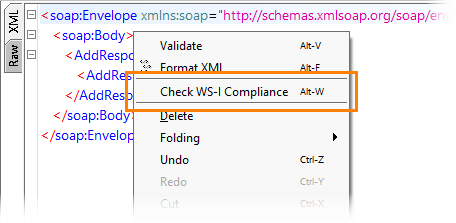
SoapUI generates the respective report that highlights whatsoever compliance errors for the current request/response message exchange.
SoapUI Open Source
- Support for Lather and Residue API Testing.
- Easy multi-surroundings switching.
- Detailed examination history and exam comparison reporting.
SoapUI Pro
- Support for SOAP, Remainder, and GraphQL API Testing.
- Like shooting fish in a barrel multi-surround switching.
- Detailed test history and test comparison reporting.
Generating Code for your WSDL
In that location are many web service evolution frameworks that allow you lot to generate code from a WSDL file. This can be either client code that calls operations specified in a WSDL file, or stubs for implementing the service itself. ReadyAPIvides a graphical interface for most frameworks. To generate it:
-
Correct-click the service in the Navigator panel and select the desired framework from the Generate Code popup bill of fare
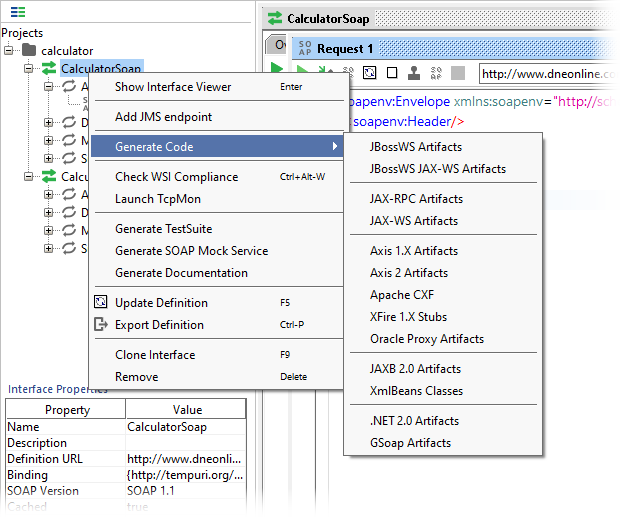
For instance, if you select the Apache CXF framework, you will see the following dialog:
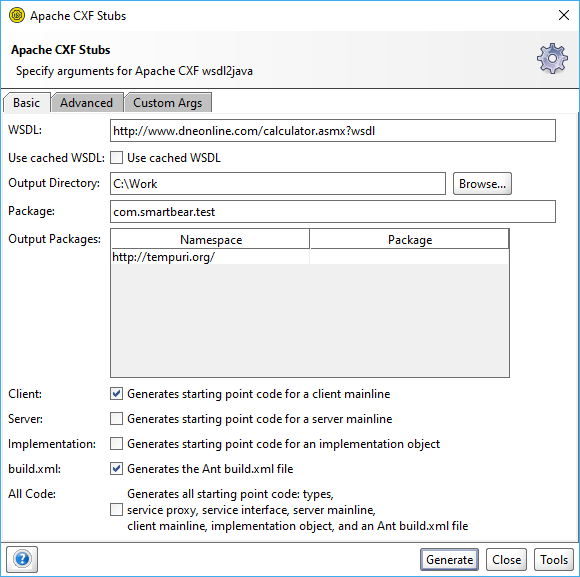
-
Specify the desired settings and click Generate. SoapUI volition launch the corresponding command-line tool:
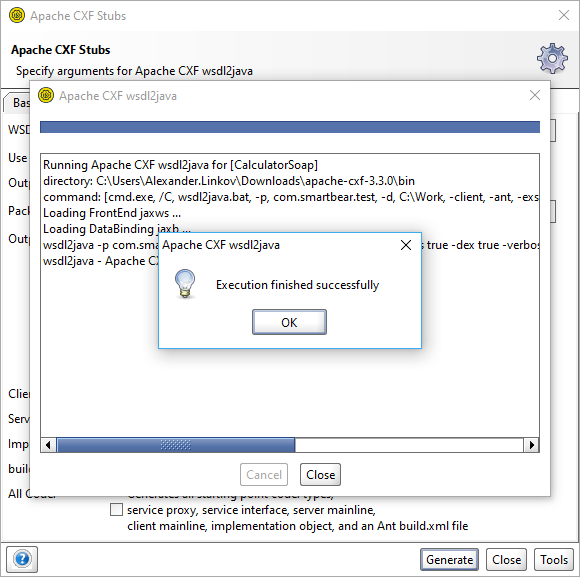
Note: You must specify the path to the corresponding tool on the Tools page of SoapUI Preferences.
The selected tool generates files in the specified binder:
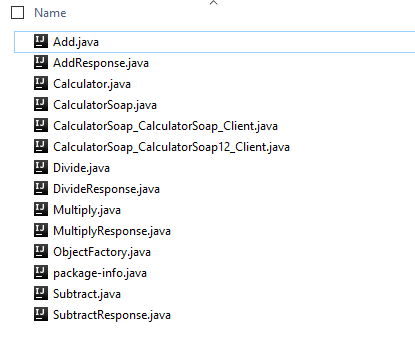
Side by side Steps
Working With WSDL Coverage
Operations and Requests
Authenticating SOAP Requests
Soap vs REST APIs: Sympathize The Differences
SOAP Attchements and Files
How to Learn to Read Wsdl File in Java
Source: https://www.soapui.org/docs/soap-and-wsdl/working-with-wsdls/
0 Response to "How to Learn to Read Wsdl File in Java"
Post a Comment